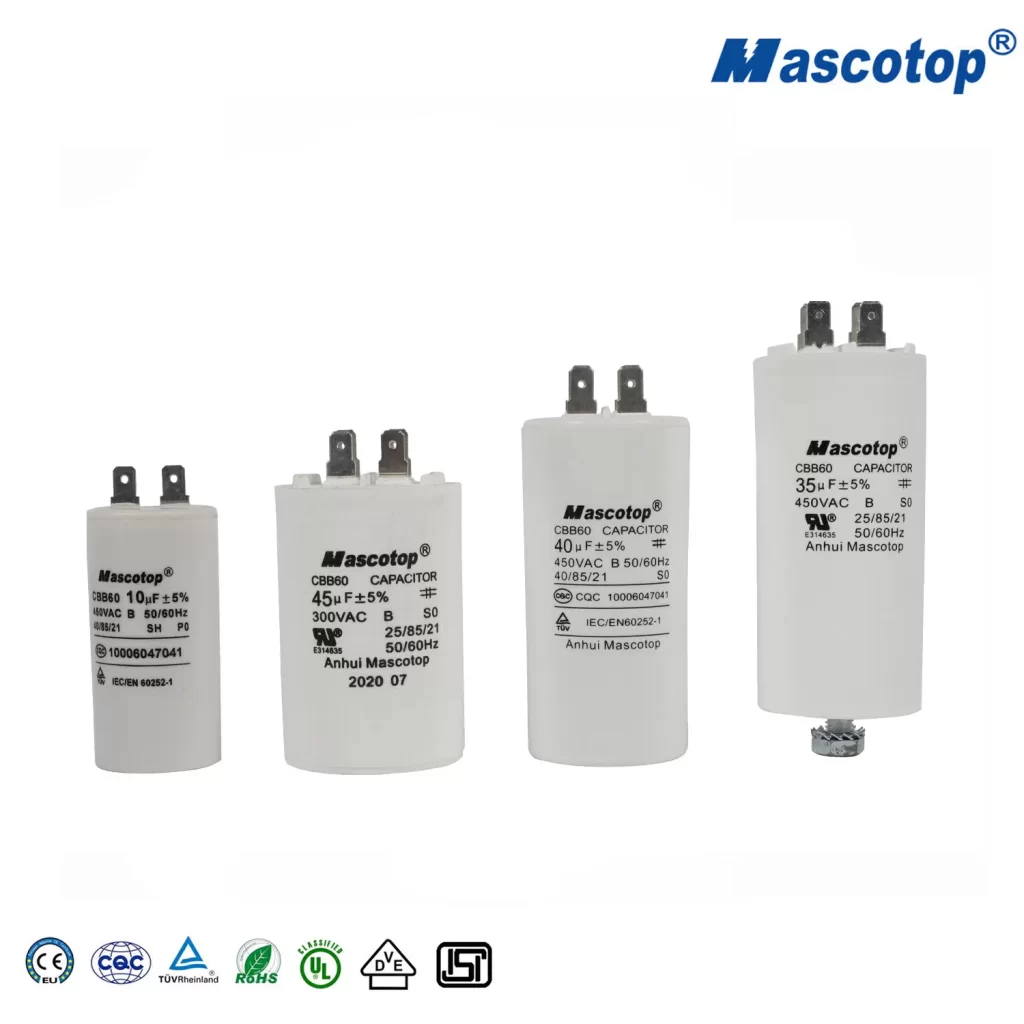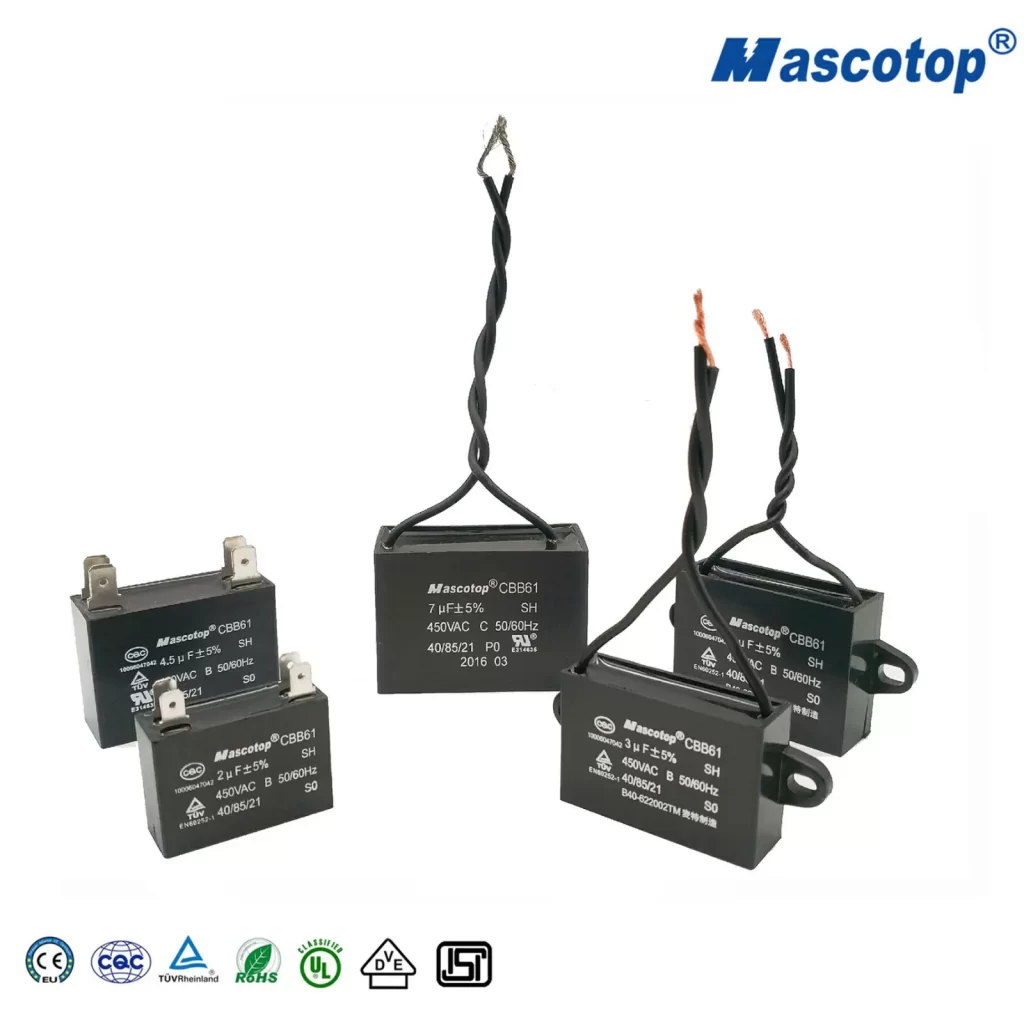
Capacitors serve as indispensable components in electrical systems, facilitating energy storage and power regulation. CBB60 and CBB61 capacitors are two distinct types commonly employed in various applications. Despite their plausible resemblances, they differ in construction, performance characteristics, and optimal usage scenarios. In this article, we embark on a detailed exploration of the disparities between CBB60 and CBB61 capacitors, shedding light on their unique attributes and application spheres.

CBB60 and CBB61 capacitors share commonalities in terms of dielectric material (polypropylene film).
CBB60 Capacitors: CBB60 capacitors exhibit a cylindrical structure, encapsulated within metallic or plastic housings. Featuring a non-polarized design, these capacitors employ a polypropylene film as the dielectric material. With their dual terminals, CBB60 capacitors facilitate hassle-free installation and connection processes.
CBB61 Capacitors: Contrarily, CBB61 capacitors are predominantly rectangular in shape and enclosed within plastic or epoxy resin housings. Characterized as polarized capacitors, they possess specific positive and negative terminal orientations. Similar to CBB60 capacitors, CBB61 utilizes a polypropylene film as the dielectric material.

CBB60 capacitors operate with lower voltage ratings ranging from 250VAC to 450VAC. In contrast, CBB61 capacitors cater to higher voltage demands, usually within the range of 250VAC to 630VAC.
CBB60 Capacitors: These capacitors find extensive application in single-phase AC motor setups, including air conditioners, compressors, and pumps. Capacitance values for CBB60 capacitors span from a few microfarads (μF) to tens of microfarads.
CBB61 Capacitors: They are prevalently employed in single-phase AC motors that possess multiple windings, such as ceiling fans and exhaust fans. Capacitance values for CBB61 capacitors typically range from a few nanoFarads (nF) to a few microfarads (μF).
CBB60 Capacitors: Leveraging their construction and lower voltage ratings, CBB60 capacitors primarily serve the purpose of power factor correction in single-phase AC motors. By compensating for reactive power, these capacitors enhance motor efficiency, bolster energy conservation efforts, and contribute to prolonged motor lifespan. Widely adopted in appliances and equipment relying on smooth and reliable motor operation, CBB60 capacitors play a crucial role in maintaining optimal performance.
CBB61 Capacitors: Tailored specifically for starting and running single-phase AC motors equipped with multiple windings, CBB61 motor capacitors fulfill the crucial task of initial torque generation while ensuring uninterrupted operation. These capacitors are frequently found in appliances with multiple-speed options, such as ceiling fans and air purifiers. By facilitating seamless motor performance throughout their lifecycle, CBB61 capacitors contribute to enhanced user experience in such applications.
Adequate familiarity with these discrepancies is vital for making informed choices when selecting capacitors to meet specific electrical system requirements. Whether it's power factor correction for single-phase AC motors (CBB60) or the efficient initialization and continued operation of motors with multiple windings (CBB61), the appropriate capacitor selection ensures optimal performance and longevity. As a reliable supplier, we offer a comprehensive range of top-quality CBB60 and CBB61 capacitors, catering to diverse electrical needs. Trust our expertise to provide you with dependable products, elevating system functionality and preserving operational excellence.